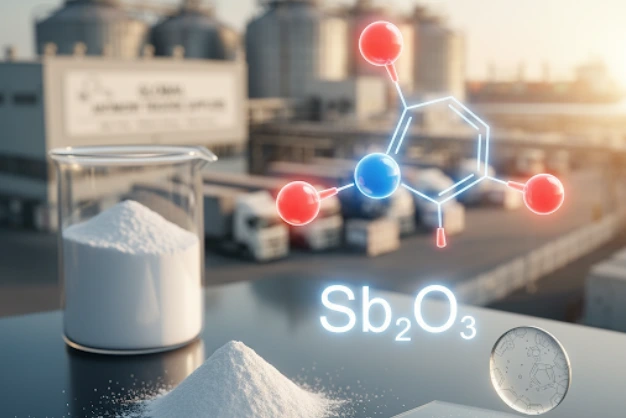TABLE OF CONTENTS
TABLE OF CONTENTS
Definition and Chemical Composition: RTV Silicone vs Silicone
RTV Silicone
RTV Silicone, or Room Temperature Vulcanizing silicone, is a subset of silicone that cures at room temperature. RTV silicones are composed of a base silicone polymer mixed with a curing agent. They are typically available in one-component (RTV-1) or two-component (RTV-2) systems. The one-component RTV cures with exposure to moisture in the air, while the two-component RTV requires mixing of two parts that cure through a chemical reaction.
Silicone
Silicone is a versatile polymer made up of silicon, oxygen, carbon, and hydrogen. It is known for its stability, resistance to extreme temperatures, and flexibility. Silicone can be found in various forms, including rubber, oil, resin, and grease, each suited to different applications. The molecular structure of silicone gives it unique properties that make it invaluable in many industries.
Curing Process: RTV Silicone vs Silicone
The curing process is a significant differentiator between RTV silicone and general silicone.
RTV Silicone Curing
RTV-1: Cures by reacting with moisture in the air, forming a rubbery solid without the need for additional heat. This type of RTV silicone is convenient for use in applications where a quick and simple seal is needed.
RTV-2: Requires mixing two components (a base and a curing agent) that cure through a chemical reaction. This allows for greater control over the curing process and is suitable for more demanding applications where precise curing properties are required.
General Silicone Curing
General silicone may require higher temperatures and pressure to cure, depending on its formulation. For instance, high-temperature vulcanizing (HTV) silicone requires heat to cure, making it less convenient for applications where room temperature curing is advantageous.
Addition-cure silicone systems also exist, which cure through a platinum-catalyzed reaction, offering different properties compared to RTV silicones.
Applications and Uses: RTV Silicone vs Silicone
RTV Silicone Applications
Sealants and Adhesives: RTV silicones are widely used in construction and automotive industries as sealants and adhesives due to their excellent bonding properties and flexibility.
Mold Making: RTV silicone’s ability to capture fine details makes it ideal for creating molds for casting various materials like resin, plaster, and even low-melting-point metals.
Electronics: RTV silicones protect electronic components from moisture, dust, and other environmental factors. They are used as potting and encapsulating compounds.
General Silicone Applications
Medical Devices: Silicone is used in medical devices such as implants, tubing, and seals due to its biocompatibility and stability.
Lubricants and Greases: Silicone oils and greases are used in applications requiring high-temperature stability and non-reactivity with other materials.
Textiles and Coatings: Silicones are applied to fabrics to impart water repellency, softness, and durability. They are also used as protective coatings for buildings and infrastructure.
Properties and Performance: RTV Silicone vs Silicone
Temperature Resistance
Both RTV and general silicone exhibit excellent resistance to extreme temperatures. RTV silicone can typically withstand temperatures ranging from -60°C to 200°C, while some specialized silicones can endure even higher temperatures.
Flexibility and Durability
RTV silicone remains flexible after curing, making it ideal for applications that require movement and stress resistance. General silicone also offers flexibility but may require specific formulations to achieve the desired properties.
Adhesion and Sealing
RTV silicones are known for their strong adhesion to a variety of surfaces, including glass, metal, and plastics. This makes them excellent sealants. General silicones also provide good adhesion but may need primers or surface treatments to enhance bonding.
Advantages: RTV Silicone vs Silicone
RTV Silicone Advantages
Ease of Use: Cures at room temperature without the need for additional heat or pressure.
Versatility: Available in different formulations to suit various applications, from simple sealants to complex mold-making materials.
Strong Adhesion: Bonds well to a wide range of materials without primers.
General Silicone Advantages
Cost-Effective: Generally more affordable, especially in large-scale industrial applications.
Wide Range of Properties: Available in various forms to meet specific needs, such as high-temperature resistance or medical-grade biocompatibility.
Longevity: Durable and resistant to environmental factors like UV radiation and ozone.
Disadvantages: RTV Silicone vs Silicone
RTV Silicone Disadvantages
Cost: Typically more expensive than general silicones due to its specialized formulations.
Curing Time: Although convenient, the curing process can be slower compared to heat-cured silicones.
General Silicone Disadvantages
Curing Requirements: May require higher temperatures and pressure to cure, making the process more complex and energy-intensive.
Surface Preparation: Sometimes needs primers or surface treatments to ensure proper adhesion.
Choosing the Right Silicone for Your Needs
When deciding between RTV silicone and general silicone, consider the following factors:
Application Type: Determine whether you need a sealant, adhesive, mold-making material, or another specific type of silicone product.
Environmental Conditions: Consider the temperature, humidity, and exposure to chemicals or UV light in the application environment.
Performance Requirements: Evaluate the necessary properties such as flexibility, adhesion, curing time, and durability.
Cost: Balance the cost against the performance and convenience offered by each type of silicone.
Common Misconceptions
There are several misconceptions about RTV silicone and general silicone that need clarification:
Misconception: All silicones are the same.
Clarification: Silicones come in various forms and formulations, each designed for specific applications and performance requirements.
Misconception: RTV silicone is only for professionals.
Clarification: While RTV silicone is used in many professional applications, it is also available for DIY projects and home repairs due to its ease of use.
Misconception: General silicone cannot provide strong adhesion.
Clarification: With the right surface preparation and formulation, general silicone can offer excellent adhesion for many applications.
Conclusion
In summary, both RTV silicone and general silicone have their unique advantages and applications. RTV silicone is ideal for applications requiring room temperature curing, strong adhesion, and flexibility. General silicone, on the other hand, offers cost-effective solutions and a wide range of properties for various industrial and consumer uses.
When choosing between RTV silicone and general silicone, consider the specific requirements of your application, including environmental conditions, performance needs, and budget. Consulting with experts and suppliers can provide valuable insights and help you make an informed decision.
For tailored advice and high-quality silicone products, feel free to reach out to our team of experts. We are here to help you find the perfect silicone solution for your needs.
FAQs
What is the main difference between RTV silicone and regular silicone?
Can RTV silicone be used for high-temperature applications?
Yes, RTV silicone can withstand high temperatures, typically up to 200°C, making it suitable for many high-temperature applications like automotive and industrial sealing.
Is RTV silicone more expensive than regular silicone?
Generally, yes. RTV silicone tends to be more expensive due to its specialized formulations and ease of use. However, the cost is often justified by its performance benefits and convenience.
What are the best applications for RTV silicone?
RTV silicone is ideal for sealants, adhesives, mold making, and electronic component protection due to its excellent bonding, flexibility, and durability.
Do I need any special equipment to cure RTV silicone?
No special equipment is needed for RTV silicone, as it cures at room temperature. For RTV-2 silicone, you simply need to mix the two components, which then cure through a chemical reaction.
Contact Us
Questions or looking for a quote?




